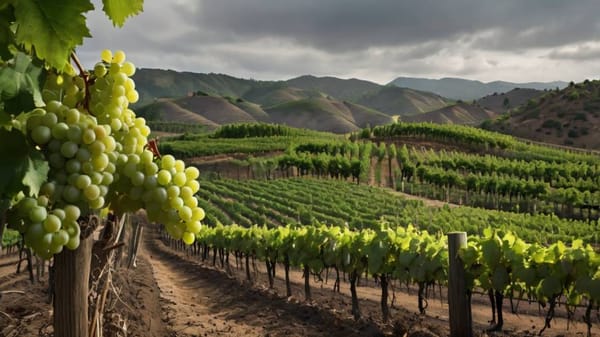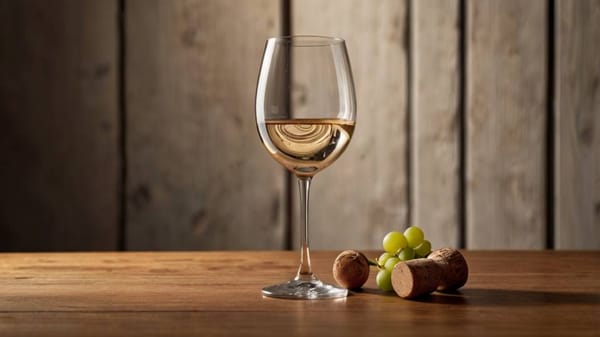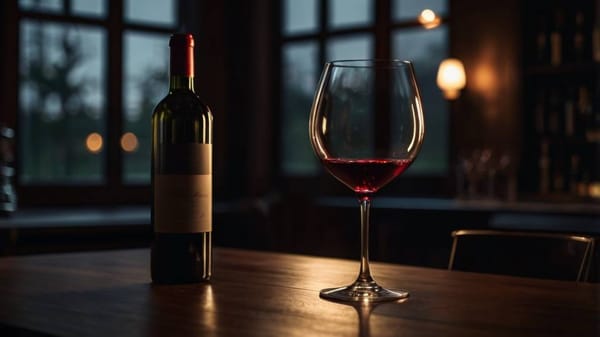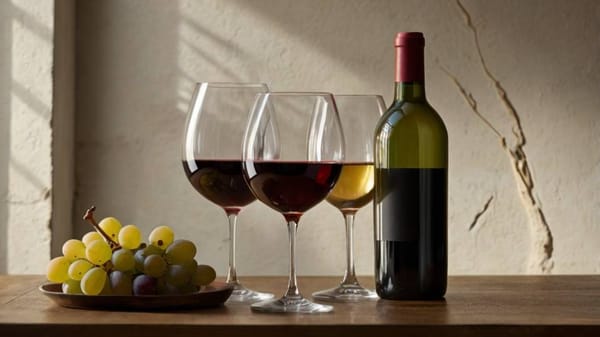Pairing Wine with a Rainy Day
Discover how rain changes the way wine tastes—and learn to choose bottles with calm weight and quiet depth to match the mood.
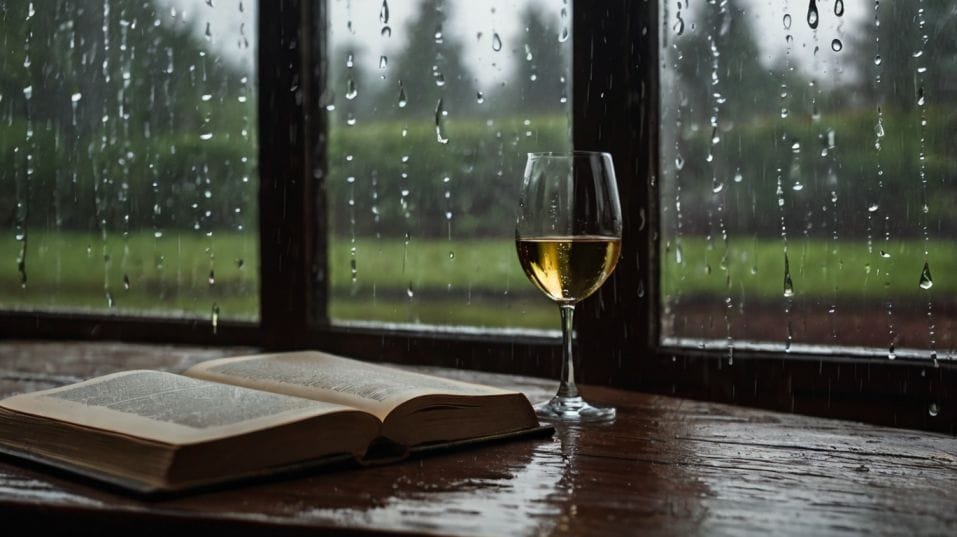
What if the rain could change how wine tastes? Gray skies don’t just set a mood—they shift your palate. Cooler air mutes acidity. Dampness dulls aromas.
You crave something deeper, not louder. The right wine won’t fight the weather—it’ll echo it. On rainy days, you don’t reach for bold or bright.
You reach for balance. For wines that feel like the moment: calm, grounded, and worth slowing down for.
The Weather Is Your First Ingredient
Temperature and humidity change how you taste. This isn’t mood talk—it’s physiology. In cool, damp weather, your senses dull slightly. Aromas seem softer.
Acidity feels harsher. Cold wine feels colder, often sharper or thinner than it does in warm weather. So the wines that feel effortless on a hot day—zesty whites, lean rosés, crunchy reds—can land a little off when clouds roll in.
This is why rainy days favor wines with texture—structure, grip, body, or softness that doesn’t vanish after the first sip.
Think of how you might reach for a sweater with weight, not just warmth. The same logic applies to your glass. You want something that offers presence.
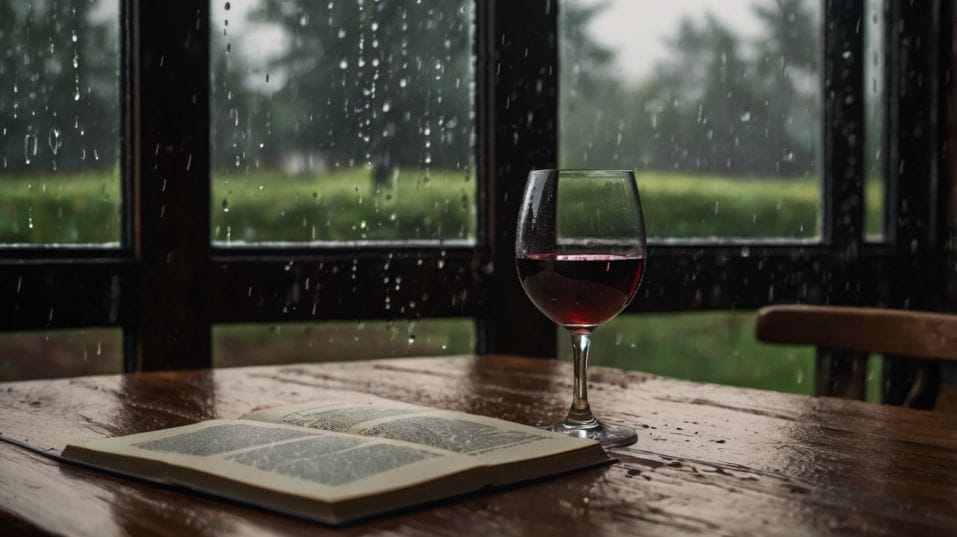
When Acidity Needs a Counterweight
On paper, acidity is a good thing in wine. It brings lift, energy, freshness. But in the wrong context—like a chilly, gray afternoon—it can stick out, even feel a little shrill. That doesn’t mean you avoid high-acid wines altogether.
It means you choose ones where that acidity is balanced by something grounding: texture from lees aging, a bit of phenolic grip, gentle oak, or even residual sugar that isn’t “sweet,” just round.
A Muscadet sur lie. A white Rhône blend. A serious Riesling with a little off-dry tension. These wines still have structure, but they carry themselves with calm weight. They don’t wake you up—they settle in.
You learn quickly on days like this: balance isn’t about intensity. It’s about harmony. The best rainy-day wines feel whole.
Red Wines That Match the Mood
Rainy days call for red wines with softness, not swagger. This is where young collectors often reach too far too fast—grabbing bold, high-alcohol wines thinking they’ll feel warming or “serious.”
But rain doesn’t ask for power. It asks for depth and tone. Wines with a gentle arc, not a punch. Pinot Noir (especially from cooler climates like Burgundy, Oregon, or Tasmania) is a natural fit.
So is Gamay, especially the cru Beaujolais kind that shows fine tannins and stony edges. These wines feel honest. They speak quietly but with shape.
If you want something deeper, look for reds with some age—where time has softened the structure and the fruit has moved into darker, quieter places.
A 10-year-old Rioja, a Nebbiolo with some bottle maturity, a Syrah that’s lost its gloss. These wines taste like rain looks: layered, diffuse, a little mysterious.
And if you’re unsure where to start, let texture be your guide. If it feels smooth, grippy, or gently drying on the finish, you’re on the right track.
White Wines That Don’t Disappear
Rain tends to wash out wines that rely on freshness alone. Your go-to porch whites—Vermentino, Vinho Verde, Picpoul—can feel hollow when you’re inside, watching steam rise from your mug. What works instead are whites with quiet depth.
Chenin Blanc is a standout here. Its natural acidity is buffered by waxy texture and earthy undertones. Try a dry Savennieres or a richer South African example.
Aged versions often carry notes of wool, lanolin, wet stone—flavors that feel perfectly at home on a rainy afternoon.
Chardonnay, too, comes into its own in this setting—but skip the oaky, tropical kind. Look instead for wines where the oak is integrated, the fruit is subdued, and the palate finishes clean but round.
Burgundy gets this right, but so do many restrained New World producers working with native yeast and minimal intervention. What matters is that the wine feels settled, not showy.
Rain Teaches You to Taste Slower
Rain doesn’t rush you. It quiets things down. That makes it the ideal condition to pay attention to how wine behaves in the glass—and in your mouth.
You’re not chasing refreshment, you’re chasing resonance. And that means slowing down your tasting.
Start with the nose. Swirl less, sniff longer. Humid air carries aromas differently—less lift, more depth. Then sip. Notice how the wine lands: sharp? soft?
neutral? Follow the texture. Where does it grip? Where does it glide? How long does it stay with you?
These are the questions that move you from “liking” a wine to understanding why you like it. And the more often you ask them, the more skillfully you’ll choose the next bottle.
Let the Setting Shape the Ritual
You don’t need a fireplace or a French playlist to take wine seriously on a rainy day. But you do need to treat the moment like it matters. That means making space. Using a good glass. Pouring with intention, not distraction.
This is how wine becomes more than a drink. It becomes a way to punctuate the day—to slow time, to mark a shift in energy.
And once you start building that kind of relationship with it, you stop needing reviews, scores, or trends to tell you what’s “good.” You’ll start to know for yourself.
That’s the real skill: not just choosing a bottle, but choosing a moment—and knowing what wine belongs there.
Final Thoughts
Rain doesn’t call for a specific varietal or region. It calls for attention. It invites you to explore wines that feel grounded, wines that reveal themselves slowly, wines that taste like weather.
You don’t need to chase richness or trend—just choose bottles that offer calm weight, subtle texture, or gentle depth.
Let rainy days be your training ground. Try a wine you’d usually overlook. Taste it quietly. Focus on how it feels, not just how it smells. And start trusting your own reactions more than the label.
Tonight, skip the quick pour. Pour something layered. Taste with the lights dim. Add this to your ritual—your way of learning, one storm at a time.

